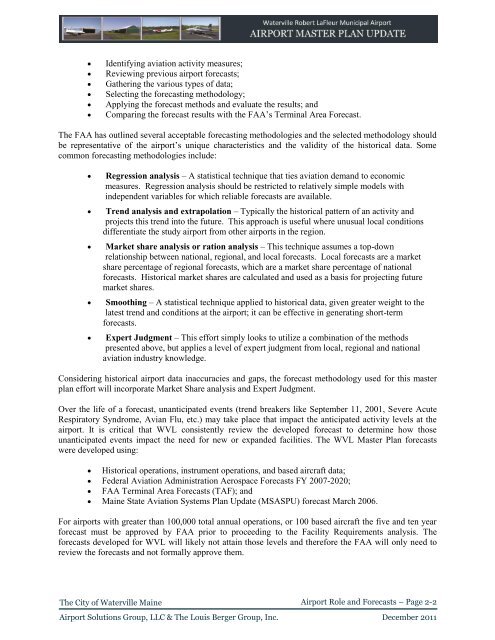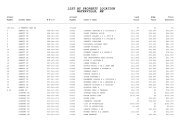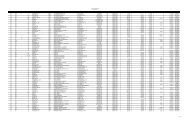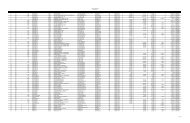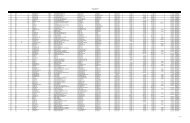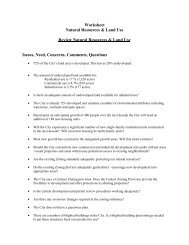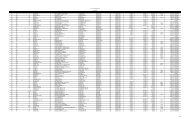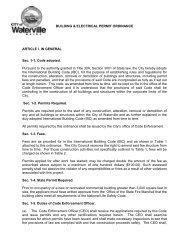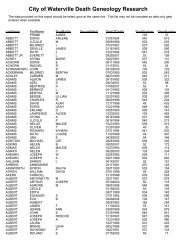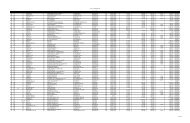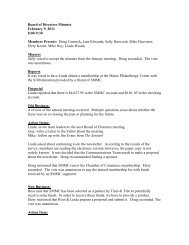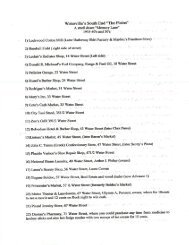Airport Master Plan 2012 - City of Waterville
Airport Master Plan 2012 - City of Waterville
Airport Master Plan 2012 - City of Waterville
You also want an ePaper? Increase the reach of your titles
YUMPU automatically turns print PDFs into web optimized ePapers that Google loves.
Identifying aviation activity measures;<br />
Reviewing previous airport forecasts;<br />
Gathering the various types <strong>of</strong> data;<br />
Selecting the forecasting methodology;<br />
Applying the forecast methods and evaluate the results; and<br />
Comparing the forecast results with the FAA’s Terminal Area Forecast.<br />
The FAA has outlined several acceptable forecasting methodologies and the selected methodology should<br />
be representative <strong>of</strong> the airport’s unique characteristics and the validity <strong>of</strong> the historical data. Some<br />
common forecasting methodologies include:<br />
<br />
<br />
<br />
<br />
<br />
Regression analysis – A statistical technique that ties aviation demand to economic<br />
measures. Regression analysis should be restricted to relatively simple models with<br />
independent variables for which reliable forecasts are available.<br />
Trend analysis and extrapolation – Typically the historical pattern <strong>of</strong> an activity and<br />
projects this trend into the future. This approach is useful where unusual local conditions<br />
differentiate the study airport from other airports in the region.<br />
Market share analysis or ration analysis – This technique assumes a top-down<br />
relationship between national, regional, and local forecasts. Local forecasts are a market<br />
share percentage <strong>of</strong> regional forecasts, which are a market share percentage <strong>of</strong> national<br />
forecasts. Historical market shares are calculated and used as a basis for projecting future<br />
market shares.<br />
Smoothing – A statistical technique applied to historical data, given greater weight to the<br />
latest trend and conditions at the airport; it can be effective in generating short-term<br />
forecasts.<br />
Expert Judgment – This effort simply looks to utilize a combination <strong>of</strong> the methods<br />
presented above, but applies a level <strong>of</strong> expert judgment from local, regional and national<br />
aviation industry knowledge.<br />
Considering historical airport data inaccuracies and gaps, the forecast methodology used for this master<br />
plan effort will incorporate Market Share analysis and Expert Judgment.<br />
Over the life <strong>of</strong> a forecast, unanticipated events (trend breakers like September 11, 2001, Severe Acute<br />
Respiratory Syndrome, Avian Flu, etc.) may take place that impact the anticipated activity levels at the<br />
airport. It is critical that WVL consistently review the developed forecast to determine how those<br />
unanticipated events impact the need for new or expanded facilities. The WVL <strong>Master</strong> <strong>Plan</strong> forecasts<br />
were developed using:<br />
Historical operations, instrument operations, and based aircraft data;<br />
Federal Aviation Administration Aerospace Forecasts FY 2007-2020;<br />
FAA Terminal Area Forecasts (TAF); and<br />
Maine State Aviation Systems <strong>Plan</strong> Update (MSASPU) forecast March 2006.<br />
For airports with greater than 100,000 total annual operations, or 100 based aircraft the five and ten year<br />
forecast must be approved by FAA prior to proceeding to the Facility Requirements analysis. The<br />
forecasts developed for WVL will likely not attain those levels and therefore the FAA will only need to<br />
review the forecasts and not formally approve them.<br />
The <strong>City</strong> <strong>of</strong> <strong>Waterville</strong> Maine<br />
<strong>Airport</strong> Role and Forecasts – Page 2-2<br />
<strong>Airport</strong> Solutions Group, LLC & The Louis Berger Group, Inc. December 2011


